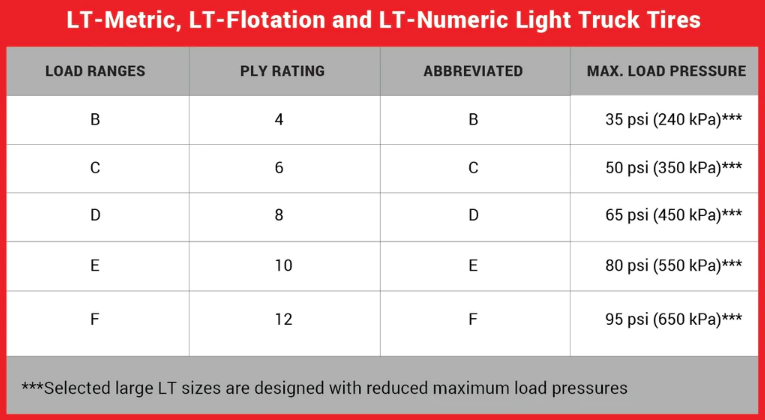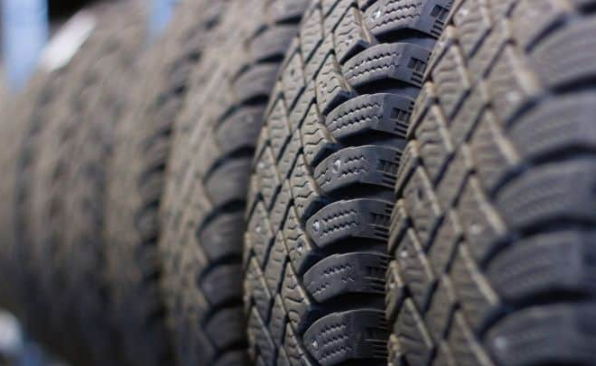Two terms may be encountered when searching for brand-new tires: load range and load index. The load capacity of passenger and commercial tires can be divided into two categories – Standard Range SL Vs. E. Each rating provides information regarding the tire; looking at both simple letters and numbers helps ensure safety when driving on highways. It is essential to understand what each of these ratings means in order to make an informed choice when buying new tires.
Load Range SL Vs. E: Identification Chart
| Load Range SL | Load Range E |
| Capable of carrying 1,477 pounds | Maximum capacity of 3,195 pounds |
| Maximum Load Pressure is 35 psi | Maximum Load Pressure is 80 psi |
| Weight Approximately 44 pounds | Weight Approximately 52 pounds |
| They are designed to be used on everyday rides | The tire can provide top-notch service with heavy loads as well as for regular use. |
| SL tires do not come with a damage resistance feature. | E tires have superior adhesion properties, resulting in longer rubber life. |
| It is possible to increase the air pressure capability | E tires have greater air pressure holding capabilities. |
Load Range SL Vs. E: Overall Analysis

One is constantly searching for comfort, whether at home or outside of it. Tire selection can be split into two varieties depending on passenger load capacity. In summary, these tires are labeled as SL and E.
“Load Range” Or “Ply Rating”
Load ranges are determined by a measure called ply rating, which indicates the amount of weight that a tire can support. Treads are made up of rubber and cord layers known as plies. The number of plies on a tire dictates its load capacity; more plies means greater weight-bearing abilities. While ply ratings are still used, tires now contain fewer but stronger plies, and the load range is defined by their toughness and maximum pressure allowed, indicated on the sidewall with letters. Load-rated tires are designed to carry heavier loads than standard ones.
Standard Load “SL” Tires
Standard Load tires, usually identified by the SL markings on their sidewalls, are designed for standard passenger cars used in daily driving. The load index indicates that its load capacity is essential for its tire size and has a maximum load pressure of 35 psi. Despite this lower rating, they are still able to support the requisite amount of weight pressure without any internal reinforcement.
Load Range “E” Tires
Operating a truck carrying heavy loads may require tires rated with the “E” symbol, indicating a very high load range. For most people, however, this level of the tire is unnecessary and not recommended; they are heavier, less fuel efficient, more challenging to ride, and costlier than other options. Unless regularly hauling or towing heavy loads beyond what a half-ton truck is rated for, load range E tires would be overrated.
Applications
Passenger vehicles often utilize SL tires, which are not able to carry heavy loads. Many passenger tires lack SL markings or do not feature any at all. Alternatively, E tires are designed for more challenging applications as their reinforced inner structures enable them to carry a much greater load than that of an SL tire.
Life Expectancy
SL tires have a weaker frame and structure, making them more prone to damage. The lack of internal reinforcements means that driving on rough roads can quickly cause wear and tear. To get the most out of these tires, it is essential to be mindful of the condition of the streets being driven. Avoiding potholes and muddy terrain will help them last longer.
E-rated tires are heavier than SLs, affecting gas mileage negatively due to increased weight. However, this should not be seen as an issue for truck owners who prioritize performance over economy. When inflated correctly, E-rated tires generally wear out faster because their thicker rubber holds heat for a longer time than SLs. All in all, when seeking durability and performance on roads or off-road terrains alike, E-rated tires remain superior to SL ones every time.
Driving Capabilities
The SL tire was created with the everyday commuter in mind. Its design allows for a comfortable, reliable ride throughout town and is perfect for frequent trips to work, the grocery store, or other close locations. Despite its versatile use, it should be noted that this product does have limitations; users must be aware of them beforehand in order to avoid disappointment.
For those who require additional capacity to move and tow heavy loads, load range E tires are recommended over SL tires due to their improved capacity. In fact, F-load range tires offer customers enhanced performance and style while maintaining a lightweight suitable for most half-ton trucks with EPA ratings of 5 tons or lower.
Load Range And Ply Rating Chart
| Load Range | Ply Rating | Max Air Pressure To Carry a Load |
| Standard Load (SL) | 4 | 36 PSI |
| Extra Load (XL) | 4 | 42 PSI |
| C1 | 6 | 50 PSI |
| C2 | 6 | 35 PSI |
| D1 | 8 | 65 PSI |
| D2 | 8 | 50 PSI |
| E1 | 10 | 80 PSI |
| E2 | 10 | 65 PSI |
| F1 | 12 | 95 PSI |
| G | 14 | 110 PSI |
Load Range SL Vs. E: What To Choose?
The selection of the correct type of tire for your vehicle is an important decision. It should be based on careful consideration of the intended use and your vehicle’s particular characteristics and capabilities. The load range SL and E tires are popular options, but which is most suitable for you?
To make an informed choice between Load Range SL Vs. E tires, it is essential to consider what kind of vehicle you own and how you will use it. With no heavy loads or high speeds involved, Load Range SL tires are likely to be a better option for daily driving purposes. However, if large loads or higher speeds come into play, opting for some Load Range E tires could be more beneficial in the long run.
👀Look at this:
Sum Up
Load Range SL and E tires vary in how much weight they can carry. SL tires are for light-duty vehicles such as passenger cars, while E is for heavier-duty applications such as trucks or SUVs. It is essential to know the load range rating of your vehicle before purchasing tires, as this will ensure you are selecting the correct sized tire to meet your needs and driving conditions.
